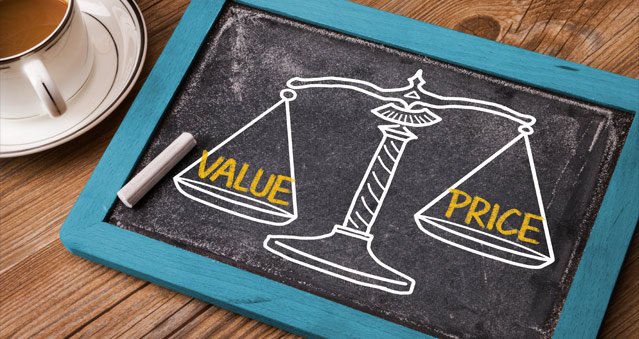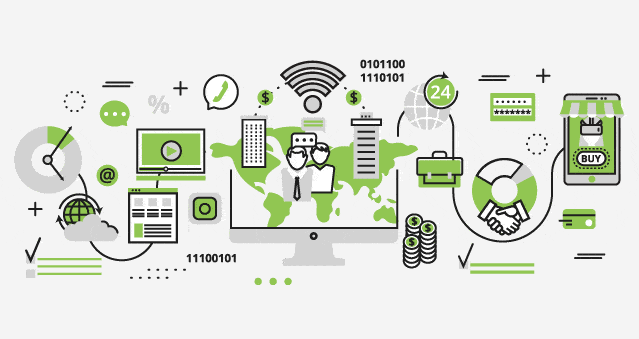To provide your offerings as-a-service, is your company planning or in the process of shifting to a flexible consumption model, also known as everything (or anything)-as-a-service (XaaS)? If your answer is yes, then join a rising number of companies that are differentiating their offerings through a service revenue model. Expected to grow at a CAGR of 24% between 2019 – 2024, XaaS is comprised of three primary categories – software-as-a-service (SaaS), platform-as-a-service (PaaS), and infrastructure-as-a-service (IaaS).
Regardless of whether you’ve already embraced XaaS or are on the cusp of doing so, you need to ensure your business doesn’t dip into the red. Determining the right service revenue model is a critical component of attracting new customers, retaining current ones, and keeping your business in the black. Before diving into service-based pricing models, let’s go behind the scene to better understand why a service revenue model is attractive to customers and businesses alike.
The Driving Force Behind Service Revenue Models
Since its inception over a decade ago, XaaS has roots in delivering value to customers, while providing businesses with advantages never before possible. From the perspective of the customer, they’re typically able to obtain offerings at a lesser cost and gain cost predictability. From the perspective of the business, they’re reaping the benefits of converting one-time buyers into subscribers, which provides them with a predictable revenue stream. In addition, the move to Xaas is helping companies increase agility, improve speed to market, and reduce costs. Plus, the pervasiveness of the Internet of Things (IoT) provides businesses with countless opportunities to modify their business model by incorporating XaaS offerings. Let’s explore a real world example to see how XaaS and IoT are complimentary.
Luxury car and aero-engine manufacturer, Rolls-Royce, wanted to offer aerospace customers the ability to rent jet engines. Known as their TotalCare program, customers are relieved from the burden of engine maintenance. Equipped with IoT sensors, the service uses advanced analytics to proactively plan maintenance or repairs. Customers are charged a fixed fee per flying hour, providing them with cost predictability. Since Rolls-Royce retains ownership of the product, they’re able to reuse the valuable materials once decommissioned, reduce waste, increase efficiency, and maintain a loyal customer base.
Does this mean that virtually any product can be offered as-a-service? On the contrary. Let’s take a look at some products you probably use daily to determine if they can/should be offered as-a-service. Would you be willing to pay a fee for the use of a toaster, coffee machine or bedside lamp? Chances are you wouldn’t and nor would anyone else. What about transportation-as-a-service (pay for use of an automobile), PC as a service (PCaaS), or TV-as-a-service? Most likely you would and may already be using these products as-a-service. It all comes down to value or perceived value and price. This is where you need the right pricing strategy. One that will have customers flocking to your offering.
Pricing Your XaaS Offering – What You Need to Know
Implementing a pricing structure that not only covers your expenses but helps you secure a healthy profit can be challenging. While there are several variables that go into establishing a service-based pricing model, we’re going to cover the five best XaaS pricing models, their benefits and considerations.
Recurring revenue models
- Subscription per user, per month, or per transaction: A subscription-based pricing model will help you build brand loyalty by converting a one-time sale into a recurring sale.
- Metered services: Also referred to as pay-per-use, this billing model provides customers with virtually unlimited resources, however, they only pay for what they use.
- Pay-as-you-go: As the name implies, customers are charged based on usage. However, implementation and monitoring usage can be a challenge.
Try before purchasing
- Tiered pricing: Many times a free version is provided for evaluation, which can attract a larger customer base for future upsell initiatives. A downside of this pricing model is that you may encounter challenges when trying to convert free users to paying customers.
Free to users
- Freemium: This pricing model provides the XaaS for free, and many companies use this model to gain personal details about the free users to help convert them into paying customers.
Due to the uniqueness of XaaS, many companies find it difficult to transform from a traditional pricing model to XaaS pricing structures. As explained by Tod Nielsen, president and CEO of FinancialForce, “When businesses move to the XaaS model, they need a new way to bill and recognize revenue. They may also need to set up a new business line. So, with the right technology and processes in place, the front office can innovate. And the back office can be agile—and help drive innovation, too.” A survey, conducted by DJS Research, of 245 C-suite and senior managers substantiated Mr. Nielsen’s comments with 82% of respondents believing that XaaS has influenced their billing models, 21% of service organizations having moved to a subscription pricing model, and 52% having partly adopted subscription pricing.
Seize the Benefits of a Service Revenue Model
Determining how to effectively integrate service-based billing models into your business can be challenging, but BillingPlatform can help. Our industry-leading, cloud-based billing platform takes the complexity out of the entire XaaS quote-to-cash process.
On a single platform, you’re able to support any business model with any combination of one-time charges, subscription, consumption, or hybrid-based billing. To seize the benefits of XaaS you need a solution that supports all of your business requirements – any product, any service, any business model – and that solution is BillingPlatform. Request a demo today to see for yourself!



